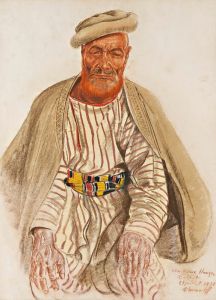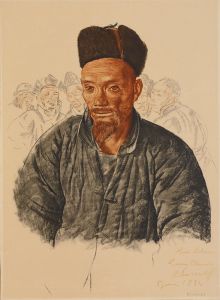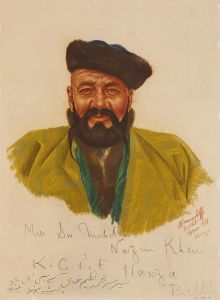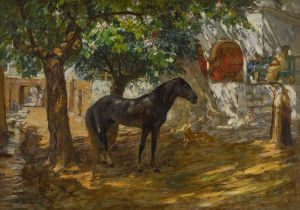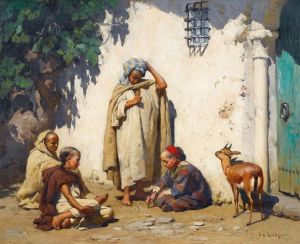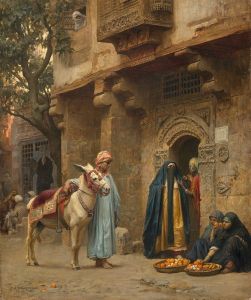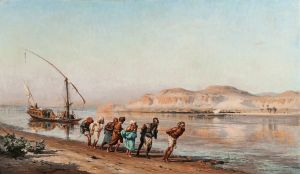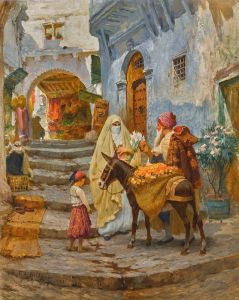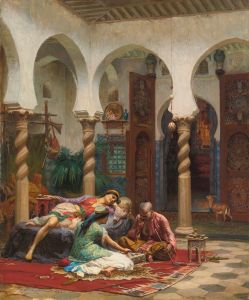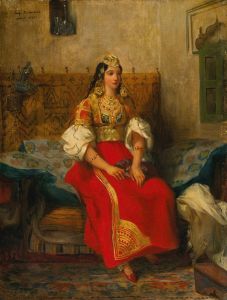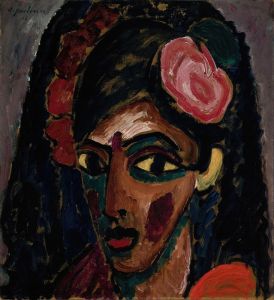
In The Souk, Tunis
A hand-painted replica of Frederick Arthur Bridgman’s masterpiece In The Souk, Tunis, meticulously crafted by professional artists to capture the true essence of the original. Each piece is created with museum-quality canvas and rare mineral pigments, carefully painted by experienced artists with delicate brushstrokes and rich, layered colors to perfectly recreate the texture of the original artwork. Unlike machine-printed reproductions, this hand-painted version brings the painting to life, infused with the artist’s emotions and skill in every stroke. Whether for personal collection or home decoration, it instantly elevates the artistic atmosphere of any space.
"In The Souk, Tunis" is a painting by the American artist Frederick Arthur Bridgman, who was known for his detailed and vibrant depictions of scenes from North Africa and the Middle East. Bridgman was born in Tuskegee, Alabama, in 1847 and later moved to Paris to study art, where he became associated with the Orientalist movement. This movement was characterized by Western artists' fascination with the cultures, landscapes, and peoples of the East, often romanticizing and idealizing their subjects.
The painting "In The Souk, Tunis" captures a bustling market scene in Tunis, the capital of Tunisia. Souks are traditional marketplaces found in many North African and Middle Eastern cities, where a variety of goods such as spices, textiles, jewelry, and food are sold. Bridgman's work is noted for its attention to detail and vibrant use of color, which bring the scene to life and provide a glimpse into the daily activities and atmosphere of a Tunisian market.
In this painting, Bridgman meticulously portrays the architecture, clothing, and interactions of the people within the souk. The composition likely includes a mix of merchants, shoppers, and possibly local children, all engaged in various activities typical of a market day. The artist's use of light and shadow adds depth and realism to the scene, highlighting the textures of the fabrics and the intricate designs of the buildings.
Frederick Arthur Bridgman spent a significant amount of time traveling in North Africa, particularly in Egypt and Algeria, which greatly influenced his artistic style and subject matter. His works are often praised for their ethnographic accuracy and the way they capture the essence of the places he visited. Bridgman's paintings provide valuable insights into the cultural and social dynamics of the regions he depicted, making them important historical documents as well as works of art.
"In The Souk, Tunis" is a testament to Bridgman's skill as an artist and his ability to immerse himself in the environments he painted. The painting is part of a larger body of work that reflects his fascination with the exotic and the unfamiliar, a common theme among Orientalist artists of the 19th century. Bridgman's contributions to the Orientalist movement have left a lasting legacy, and his works continue to be studied and admired for their artistic and historical significance.
Overall, "In The Souk, Tunis" exemplifies Frederick Arthur Bridgman's talent for capturing the vibrancy and complexity of life in North African markets, offering viewers a window into a world that was both foreign and fascinating to Western audiences of his time.





